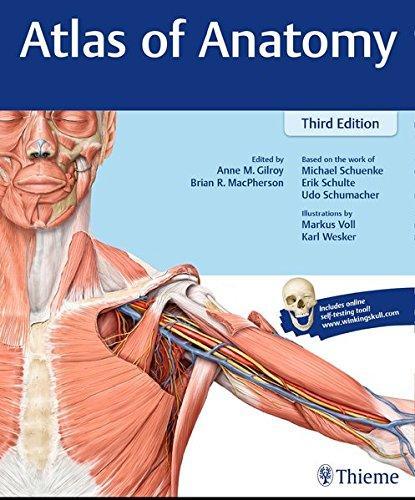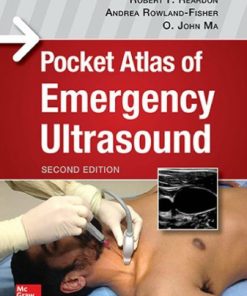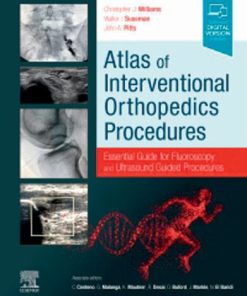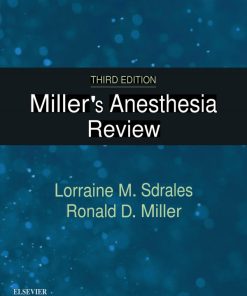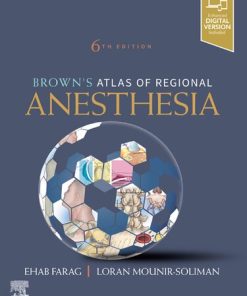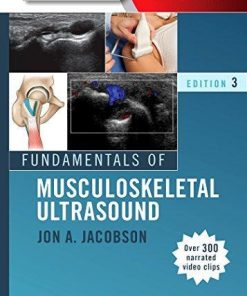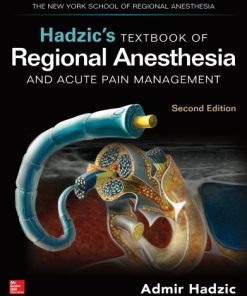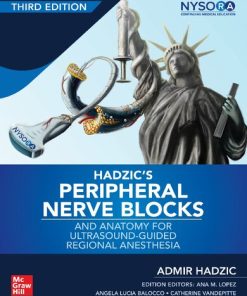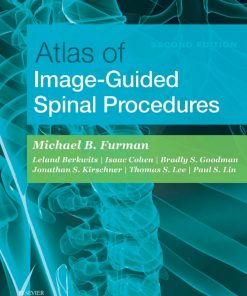(EBook PDF) Atlas of Ultrasound Guided Regional Anesthesia 3rd Edition by Andrew Gray 0323512097 9780323512091 full chapters
$50.00 Original price was: $50.00.$25.00Current price is: $25.00.
Atlas of Ultrasound-Guided Regional Anesthesia 3rd Edition by Andrew Gray – Ebook PDF Instant Download/DeliveryISBN: 0323512097, 9780323512091
Full download Atlas of Ultrasound-Guided Regional Anesthesia 3rd Edition after payment.
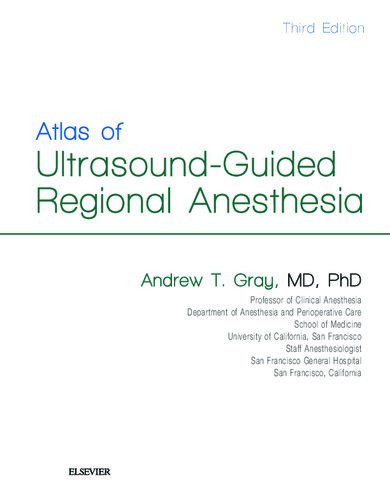
Product details:
ISBN-10 : 0323512097
ISBN-13 : 9780323512091
Author: Andrew Gray
Step-by-step videos and images, board-style review questions, and coverage of new blocks make this highly respected title a must-have reference for clinical practice. Written by Andrew T. Gray, MD, PhD, one of the pioneers of the use of ultrasound to guide needle placement, Atlas of Ultrasound-Guided Regional Anesthesia, 3rd Edition, shows you how to safely and effectively use the latest methods and applications of this technique.
Atlas of Ultrasound-Guided Regional Anesthesia 3rd Table of contents:
Section 1 Introduction to Ultrasound Imaging
Chapter 1 Ultrasound
Reference
Chapter 2 Speed of Sound
References
Chapter 3 Attenuation
Reference
Chapter 4 Reflection
References
Chapter 5 Beam Width (Slice Thickness)
References
Chapter 6 Anisotropy
References
Chapter 7 Spatial Compound Imaging
Reference
Chapter 8 Doppler Imaging
References
Chapter 9 Ultrasound Transducers
Reference
Chapter 10 Transducer Manipulation
References
Chapter 11 Needle Imaging
Insertion Angle (Angle of Insonation)
Needle Gauge
Bevel Orientation
Receiver Gain
Needle Motion and Test Injections
Echogenic Modifications
Spatial Compound Imaging
References
Chapter 12 Approach and Techniques
Offline Markings
Online Guidance
Out-of-Plane Approach
In-Plane Approach
Needle Redirection During in-Plane Technique
References
Chapter 13 Sonographic Signs of Successful Injections
Reference
Chapter 14 Ultrasound-Guided Continuous Peripheral Nerve Blocks
Introduction
Suggested Technique
Discussion
References
Chapter 15 Three-Dimensional Ultrasound
References
Section 2 Structures
Chapter 16 Anatomic Structures
Reference
Chapter 17 Skin and Subcutaneous Tissue
References
Chapter 18 Peripheral Nerves
References
Chapter 19 Muscle
References
Chapter 20 Tendons and Ligaments
References
Chapter 21 Arteries
Chapter 22 Veins
References
Chapter 23 Bone
Reference
Chapter 24 Pleura
References
Chapter 25 Peritoneum
References
Chapter 26 Lymph Nodes
Section 3 Upper Extremity Blocks
Chapter 27 Supraclavicular Nerve Block (of the Cervical Plexus)
Suggested Technique
References
Chapter 28 Interscalene and Supraclavicular Blocks (of the Brachial Plexus)
Sonoanatomy of the Posterior Cervical Triangle
Anatomic Variation
Suggested Technique
References
Chapter 29 Phrenic Nerve Imaging
References
Chapter 30 Dorsal Scapular Nerve Imaging
References
Chapter 31 Suprascapular Nerve Block (Anterior Approach above the Clavicle)
Limitations to Traditional Approach to Blocks at the Suprascapular Notch
Suggested Technique
Selectivity
Clinical Assessment
References
Chapter 32 Infraclavicular Block
Suggested Technique
Comments
References
Chapter 33 Axillary Block
Suggested Technique
References
Chapter 34 Musculocutaneous Nerve Block
Suggested Technique
References
Chapter 35 Forearm Blocks
References
Chapter 36 Radial Nerve Block
Suggested Technique
Neurologic Assessment
References
Chapter 37 Median Nerve Block
Suggested Technique
Neurologic Assessment
References
Chapter 38 Ulnar Nerve Block
Suggested Technique
Neurologic Assessment
References
Section 4 Lower Extremity Blocks
Chapter 39 Lateral Femoral Cutaneous Nerve Block
Suggested Technique
References
Chapter 40 Fascia Iliaca Block
Suggested Technique
References
Chapter 41 Femoral Nerve Block
Suggested Technique
References
Chapter 42 Adductor Canal Block
Suggested Technique
Quadriceps Weakness
References
Chapter 43 Obturator Nerve Block
Suggested Technique
References
Chapter 44 Sciatic Nerve Block
Suggested Technique
References
Chapter 45 Anterior Sciatic Nerve Block
Suggested Technique
References
Chapter 46 Popliteal Block
Suggested Technique
References
Chapter 47 Posterior Femoral Cutaneous Nerve Block
Suggested Technique
Proximal Block of the Posterior Femoral Cutaneous Nerve (Subgluteal Region)
Neurologic Assessment
Distal Block of the Posterior Femoral Cutaneous Nerve (Popliteal Region)
References
Chapter 48 Ankle Blocks
References
Chapter 49 Saphenous Nerve Block in the Leg
Suggested Technique
References
Chapter 50 Deep Peroneal Nerve Block
Suggested Technique
References
Chapter 51 Superficial Peroneal Nerve Block
Suggested Technique
References
Chapter 52 Sural Nerve Block
Suggested Technique
References
Chapter 53 Tibial Nerve Block
Suggested Technique
References
Section 5 Trunk Blocks
Chapter 54 Intercostal Nerve Block
Suggested Technique
References
Chapter 55 Pectoral Nerve Block (the Pecs Block)
Suggested Technique
Neurologic Assessment of Block
Relation With Other Blocks
References
Chapter 56 Transversus Thoracis Muscular Plane Block
The Transversus Thoracis Muscle
Internal Mammary Vessels
Suggested Technique
References
Chapter 57 Rectus Sheath Block
Suggested Technique
References
Chapter 58 Ilioinguinal and Iliohypogastric Nerve Blocks
Suggested Technique
References
Chapter 59 Transversus Abdominis Plane Blocks
Anatomic Background
Indications and Contraindications for the Procedure
Suggested Technique
Pharmacokinetics
Discussion and Comments
References
Chapter 60 Quadratus Lumborum Blocks
Clinical Anatomy/Sonoanatomy
Nomenclature and Points of Injection
Patient Positioning and Equipment Selection
Acknowledgments
References
Chapter 61 Thoracic Paravertebral Block
Introduction
Gross Anatomy
Communications of the Thoracic Paravertebral Space
Mechanism of Blockade
Thoracic Paravertebral Block—Anatomical Landmark Based Techniques
Ultrasound-Guided Thoracic Paravertebral Block
Sonoanatomy Relevant for Thoracic Paravertebral Block
Conclusion
Acknowledgments
References
Chapter 62 Pudendal Nerve Block in Children
Introduction
Suggested Technique
Discussion and Comments
References
Chapter 63 Neuraxial Block
Introduction
Suggested Technique for Offline Lumbar Epidural Catheter Placement
Comments
High-Resolution Ultrasound Imaging of the Neuraxis
Outcomes
References
Chapter 64 Caudal Epidural Block
Suggested Technique
References
Section 6 Head and Neck Blocks
Chapter 65 Supraorbital Nerve Block
Suggested Technique
Comments
References
Chapter 66 Mental Nerve Block
Suggested Technique
References
Chapter 67 Superior Laryngeal Nerve Block
Suggested Technique
References
Chapter 68 Transtracheal Block
Identification of the Cricothyroid Membrane
Suggested Technique
References
Chapter 69 Greater Occipital Nerve Block
Suggested Technique
Discussion and Comments
References
Chapter 70 Lesser Occipital Nerve Block
Suggested Technique
References
Chapter 71 Great Auricular Nerve Block
Suggested Technique
References
Chapter 72 Cervical Plexus Block
Introduction
Suggested Technique
Discussion
References
Chapter 73 Stellate Ganglion Block (Cervicothoracic Sympathetic Ganglion Block)
Anatomic Structures to Be Identified for Stellate Ganglion Block
Approach and Suggested Technique
References
Section 7 Safety Issues
Chapter 74 Safety
Vascular Complications
Local Anesthetic Systemic Toxicity
Neurological Complications Associated With Peripheral Nerve Blockade
Respiratory Complications
Practical Suggestions for Reducing Risk of Phrenic Nerve Block and Hemi-Diaphragmatic Paralysis
Other Considerations
Other Complications
References
Chapter 75 Regional Anesthesia in Resource-Constrained Environments
Introduction
Technique Selection and Preferred Blocks
Equipment Challenges
Challenges With Consumables
Training and Staffing
Ethics and Safety of Regional US in LMICs
People also search for Atlas of Ultrasound-Guided Regional Anesthesia 3rd:
atlas of ultrasound and nerve stimulation guided regional anesthesia
basics of ultrasound for regional anesthesia
ultrasound guided injections near me
ultrasound guided biopsy near me
ultrasound guided core biopsy cost
Tags:
Atlas,Ultrasound Guided,Regional Anesthesia,Andrew Gray
You may also like…
Medicine & Health Science
Medicine - Anesthesiology and Intensive Care
Medicine - Anesthesiology and Intensive Care
Medicine - Anesthesiology and Intensive Care




